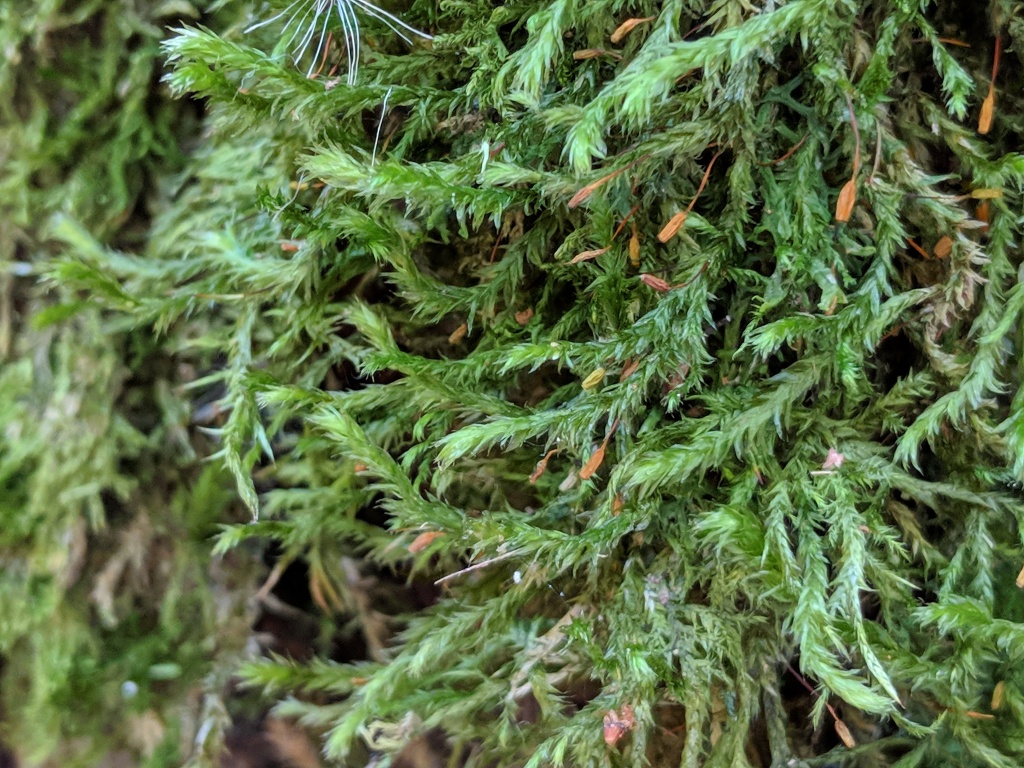Glyphothecium sciuroides
(Hook.) HampeDioicous. Asexual reproduction by clavate gemmae in upper leaf axils. Loose tufts on tree trunks. Stems 1–12 cm long, simple or dichotomously branched, usually upturned toward apices, dark brown or black, with red-brown rhizoids at base, with abundant foliose paraphyllia. Leaves spreading when moist or dry, sometimes suberect and secund when dry, ovate, 1.8–3 mm long, 1–1.2 mm wide, concave, plicate at base; apices acuminate; costae double, very short; margins serrulate to serrate at apex, otherwise entire, widely recurved at base; laminal cells linear, elliptic or rhomboid, 17–58 μm long, 5–10 μm wide, smooth; alar cells quadrate to rectangular, 10–28 μm long, 5–10 μm wide, forming a conspicuous dark orange rectangular patch along leaf margin. Setae 3–6 mm long, red-brown, smooth, not twisted. Capsules erect, ovoid to cylindric, symmetric, 1.5–2 mm long, brown. Opercula slightly oblique-rostrate from conic base, 0.7–1 mm long.
VVP, GipP, CVU, GGr, EGL, EGU, HSF, HNF, OtR, Strz, MonT, HFE, VAlp. In rainforests or sheltered gullies in wet sclerophyll forest in the Otways, Central Highlands, Yarra Ranges, the Dandenongs, Strzelecki Ranges and East Gippsland. Also NSW, ACT and Tas. New Zealand, Sri Lanka, Taiwan, Malesia and Chile.
 Spinning
SpinningHattaway, R.A. (1981). Commentary on the genus Glyphothecium (Ptychomniaceae). The Bryologist 84: 344–347.


